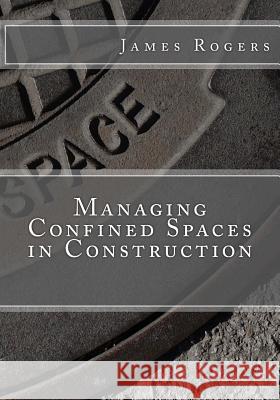Managing Confined Spaces in Construction » książka
Managing Confined Spaces in Construction
ISBN-13: 9781523837205 / Angielski / Miękka / 2017 / 122 str.
There are many publications available related to confined spaces, however there are very few that are dedicated to the management of confined spaces in the construction industry. Even the ones that address construction tend to do so in the context of tank and silo construction, or retrofits at existing facilities where spaces are well defined and controlled. This book was designed to address the confined spaces that can be found on many typical construction sites. The ones that probably haven't been identified or classified yet because they didn't exist when the project started. The ones that get constructed without consideration of what work remains that needs to be done inside. The ones that many people in the construction industry do not recognize as confined spaces, such as manholes, catch basins, attics and pits. Both safety professionals and construction managers will find this book useful as it details the identification and management of these spaces and conditions. In May 2015, the United States Department of Labor's Occupational Safety and Health Administration (OSHA) issued new rules for the Construction Industry that changed the way confined spaces must be managed on construction sites in the United States. This new set of regulations, known as 29 CFR 1926 Subpart AA, formally introduces the concept of a Permit Required Confined Space to the construction industry and defines the conditions that mandate a formal and documented process that must be followed to enter these spaces. This book takes a common-sense approach to the management of these spaces on construction sites. It gives a detailed explanation of the OSHA rules and regulations and compares them to other regulatory texts including the Canadian standards and the National Fire Protection Association (NFPA) guidelines. Case studies are presented to illustrate both the importance and the complexities of managing confined spaces and confined space entries. Suggestions and examples are provided to assist construction companies with the development and implementation of a safety management program for confined spaces while discussing best practices versus regulatory minimum standards. Chapters include information on classifying confined spaces, communicating hazards to employees, training entry teams, establishing stand-by rescue plans, and the identification and avoidance of hazards commonly found in confined spaces on construction sites. Appendices include discussion on the use and maintenance of atmospheric testing equipment as well as the entire regulatory text contained in 29 CFR 1926 Subpart AA.
Zawartość książki może nie spełniać oczekiwań – reklamacje nie obejmują treści, która mogła nie być redakcyjnie ani merytorycznie opracowana.











